Formal protests. Mass demonstrations. Attacks. Publishing images of Muhammad, especially caricatured images, almost always provokes violent reactions from Muslims around the world. Why? Does religion really prohibit the followers of Islam from creating images of the Prophet?
In September 2005, the publication by the Danish daily Jyllands-Posten of twelve humorous portraits of Muhammad started a real storm . Thousands of people protested in the streets of Copenhagen.
Ambassadors from Muslim countries also intervened. Soon the magazine was condemned by the Arab League. When the cartoons were reprinted by twelve European newspapers on February 1 of the following year, a wave of protests spilled over the world.
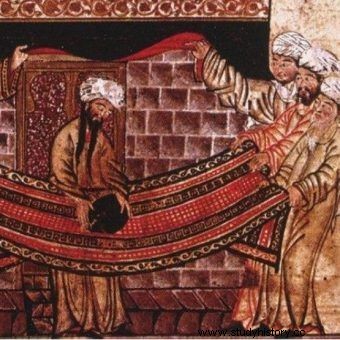
Of all the prophets of Islam, Muhammad is the most famous and revered.
An even more hostile reaction was met by the Swedish artist Lars Vilks, whose caricature of the Prophet, depicting him with the head of a dog, became famous in 2007. Since then, some terrorist organizations, including Al-Qaeda and Ash-Shabab, have sentenced him to death. "For this reason, Vilks is so used to living with armed bodyguards that he calls them" his family "or" boys ", says Niklas Orrenius, author of the report " Shots in Copenhagen " .
Who cannot be painted?
This and other conflicts around the images of the founder of Islam result from the fact that most of the followers of this religion consider their creation as forbidden. Certain circles go even further, opposing all forms of representing man in painting or sculpture. Where did this prohibition come from? One thing is for sure. Certainly not from the Koran.

After the publication of twelve cartoons of Muhammad in a Danish newspaper in 2005, al-Qaeda sentenced its author Lars Vilks to death.
"Contrary to what you sometimes hear, there is no formal condemnation of images in the Qur'an ”Explains the theologian and religious historian François Boespflug. There are many accounts that Muhammad was not against creating human images. After entering Mecca, he reportedly even had a fresco of Mary and Jesus saved. He also never forbade painting his own likenesses, although he emphasized that "he is only a human".
Moreover, the holy book of Muslims does not even explicitly prohibit the depiction of Allah. In this respect, Judaism turns out to be more radical than Islam. The Jewish Decalogue definitely forbids creating images of God.
At the same time, however, the Koran gives some grounds for the later distrust of Muslims towards images. He goes against idols ( asnam ), that is, performances that are worshiped . He criticizes the cult of images, the idolatry into which the tribes living in Arabia fell during the formation of Islam, and - at least according to the Prophet and his successors - other great monotheistic religions.
It was therefore assumed that excessive attachment to human images could lead to the sin of idolatry ( shirk ) which strikes at the very foundation of Islam. After all, worshiping anyone or anything as equal to Allah undermines the fundamental belief that there is one, indivisible God.
Muslims defend this belief much more fiercely than even Christians. The latter finally accept the worship of Christ (who for the followers of Islam is only one of the prophets) and the whole multitude of saints.
"Pictures, dogs and the dirty"
Reluctant to images of people and animals, the tone was picked up by the Islamic tradition. Certain hadiths are especially critical to creating images of living creatures , that is, messages about the deeds and statements of Muhammad later than the Qur'an.
It is in them that you can find statements such as "Angels avoid being in places where there are images, dogs and filth ". According to them, artistic activity can be interpreted as ... competition with God's creative activity . So painters and sculptors of humans and animals are essentially blasphemers.
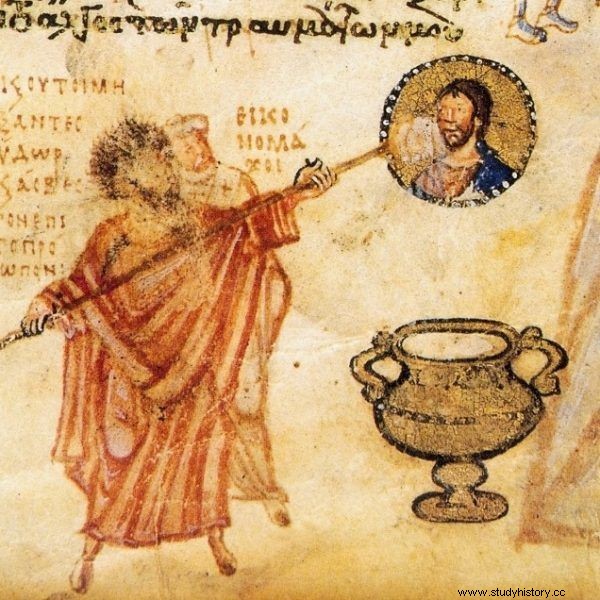
The dispute over the image of God or people with the charism of holiness was present in various world religions. This problem also affected Christians, which became the source of a centuries-long dispute over iconoclasm.
It is worth adding, however, that this radical interpretation is not universally accepted by Muslims. On the contrary, its scope and influence have changed significantly throughout history. Hostility towards everyone images, including those created by representatives of other cultures, are expressed only by some.
"Destruction of images belonging to other religions, as the Afghan Taliban did in 2001 with images of the Buddha in Bamyan, is not a style or practice of Muslims, even though some Islamic authorities have endorsed the action," stresses François Boespflug.
From the very beginning, the tradition is against representing Allah himself in art and this principle is adopted by the entire Muslim world .
“For Muslims, God is one of a kind, He is second to none, so He cannot be represented except by His word, the Koran. Muslims worship him directly, without intermediaries, so they also do not need to create images of saints like Christians, explain the researchers of Islamic art, Sheila S. Blair and Jonathan M. Bloom.
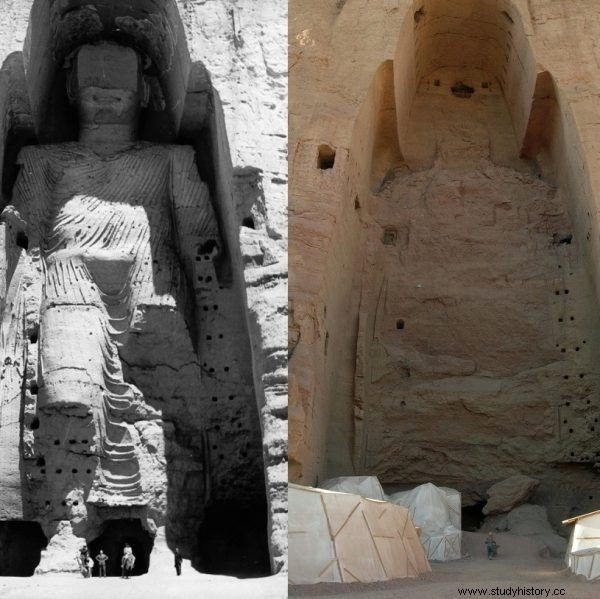
In 2001, the Afghan Taliban destroyed Buddha images in Bamyan, which caused outrage. The list shows the sculpture in the condition from 1963 (left) and the same place in contemporary photography, where only an empty niche is visible.
Boespflug adds that the ban is also due to the fear of oversimplification and attachment to the very representations of God. Each attempt to paint a divine image is doomed to failure in advance, because its essence is incomprehensible to man. As a result, images of God harm more than help…
Unrepresentable Prophet?
How is it with Muhammad himself? The attitude to his images has undergone the most fundamental change over the centuries. Initially, they were not taboo.
"There are many illustrations of the Prophet that come from early Mughal manuscripts, from the Ilkhanid to the Ottoman times," argues Wijdan Ali, who analyzes early representations of the founder of Islam.
The situation began to change only in modern times. "As far as we know, the Prophet has never been depicted with his face uncovered since the 16th century," reports Ali. Indeed, already in the 17th century book "Subhat al-Akhbar", Muhammad's head is covered with a white headscarf. Later, even his character ceased to appear. Today, drawing it is unthinkable for many.
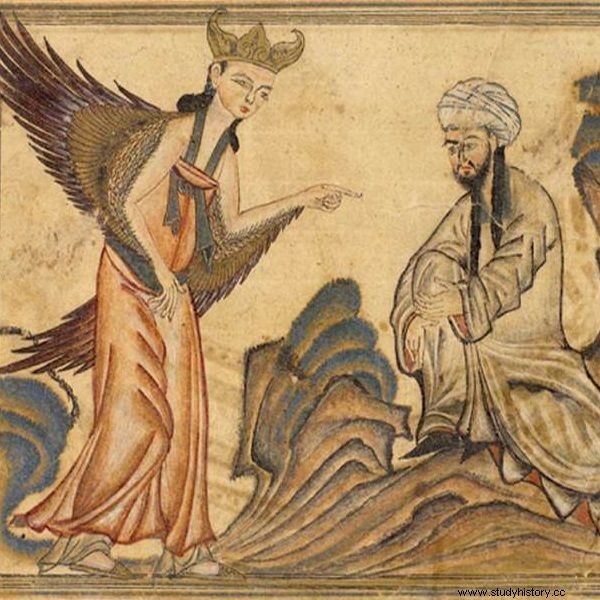
14th-century depiction of the Prophet Muhammad. From the 16th century onwards, images of the prophet must have depicted him with his face covered with a headscarf, expressing the view that his body could not reflect a spiritual nature.
Where did this change come from? The prohibition of creating the image of the Prophet consists basically of all the above-mentioned threads. Some condemn his portraits, fearing idolatry, and stressing that they may be worshiped in a way that is incompatible with his human (not divine) nature. Others derive their reluctance from the general condemnation of depictions of humans and animals.
Finally, there are also those who use a very similar line of reasoning towards the founder of a religion as towards God. This way of thinking is reported by Wijdan Ali:
For a Muslim, the Prophet personifies an ideal man whose temporal qualities cannot reveal spiritual qualities. In Islam, the body cannot represent a person in any way; only the soul, impossible to grasp in any tangible dimension, can truly express the individual.
In his own way, the Prophet - "perfect man" - was thus subject to the same prohibition as God, for no image can fully reflect his personality.
Interestingly, in the case of other ancient sages who became prophets in Islam, such as Jesus or Moses, similar reservations do not apply. The status of Muhammad thus comes dangerously close to that of God himself…
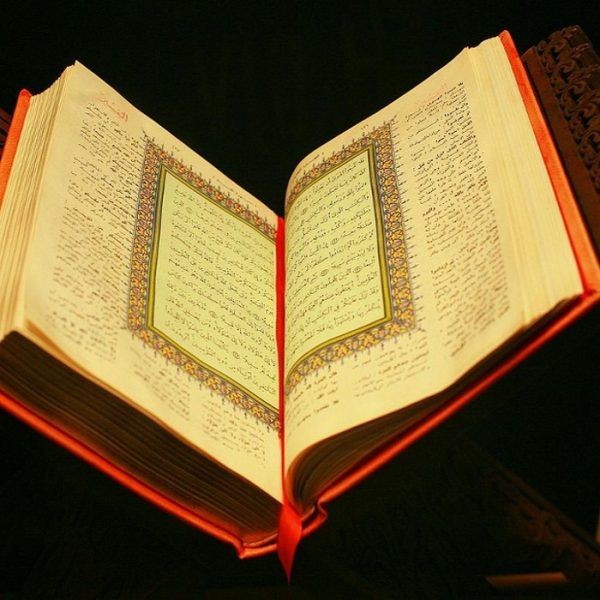
In the holy book of Islam, the "Koran", one can search in vain for sentences about the prohibition of creating images of God.
In view of the centuries-old custom of avoiding portrayals of the Prophet, it is not surprising that satirical images appearing in the press can shock the followers of Islam.
Especially since many of them are offensive from the Muslim point of view. This was the case with the drawing by Lars Vilks. As Professor Mohammad Fazlhashemi explained to the author of the book "Arrows in Copenhagen":
A drawing in which the head of the Prophet Muhammad is seated on a dog's body will be regarded by many Muslims as pure offense (…). In the Arab-Muslim context, comparing a human to a dog is extremely degrading. There is no theological basis here, it is rather a cultural tradition. "Dog" is an offensive epithet used to humiliate people.
Swedish artist Lars Vilks so he hit - whether he wanted to or accidentally - at an exceptionally sensitive point. The reaction to his work proved that a significant proportion of Muslims do not appreciate this type of iconoclastic sense of humor. Almost everyone felt offended. And while the radical minority behind attacks on the artist himself and on others spreading unwanted images should be strongly condemned, the grief and indignation of most believers is understandable.
